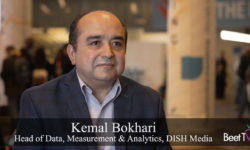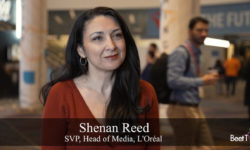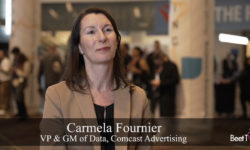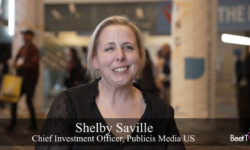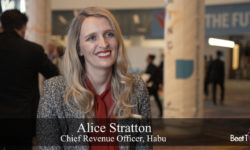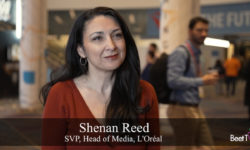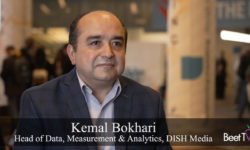LAS VEGAS — Can electronics retailer Best Buy help tech firms like Samsung and Google prove the worth of their partnerships?
Mark Heitke thinks new “clean room” software could help answer that question.
In this video interview with Beet.TV, Heitke, Director, Ad Products & Audience Strategy, Best Buy Ads, explains how the tech allows Best Buy, which is also now an ad seller, to combine customer data sets with its customers – without breaking privacy rules.
Retail player
It is a year since Best Buy launched Best Buy Ads, leveraging its own first-party data to offer brands the opportunity to advertise across its 180 million-customer footprint, including:
- Search
- Display
- Video
- Social
- In-store
- Direct email and mail
The outfit offers reporting insights to close the loop on ad performance. It is another case of a retailer becoming a media seller.
https://digiday.com/media/best-buy-launches-its-own-in-house-media-network/
“So much of the retail media conversation is about grocery,” Heitke says. “We just have a tonne of time under our belt trying to build more innovative things, more detailed partnerships with brands you would know and love, like Samsung and Microsoft.”
Data security
Best Buy Ads has been turning to the new “clean room” technology, which allows media buyers and sellers to match their consumer data without directly sharing it with each other. With privacy regulation and deprecation of identifiers, that is emerging as a powerful tool.
“Best Buy has a very open privacy policy with our consumers,” Heitke says. “We’re very direct about what we do and don’t do with your data.
“So for us, the clean room became an enabler to then collaborate more as a brand with partners like publishers, to be able to start to figure out audience overlap, more detailed audience analysis, as well as start to build ways to bring brand data to our retail data and start to move that into our retail media side.”
Driving benefits
Clean room tech isn’t just about keeping legal teams happy on data use. Best Buy Ads’ Heitke says it also supports material benefits:
- “Advanced self-service reporting. More detailed analytics on campaigns, crossover to their campaigns. Do they have a data science team that wants to dig in and do more detail than our standard reporting operation?”
- “Audience assembly. Start to take brand data – I think of Samsung or Google data – overlap our data, build new audience segments together collaboratively, and then push them out and activate them.”
“We’re both safe, we’re both trusting each other and we have those controls that we get from a clean room to be able to defensively, comfortably put our data in there and not feel like we’re going to have data leakage.”
Running faster
Although data clean room tech has been around for a few years now, application in media is relatively recent.
Heitke says Best Buy Ads is “early” in the game and the company is trying to figure out the category’s true effectiveness, but it being helped buy its chosen vendor.
“We’ve been partnering with Habu lately as – (there are) tonnes of learnings with brand partners along the way – that’s helped us refine the use cases,” he says.
“We’re starting to work through porting more data into our space there. I think that would put us on par with some of the other people we’ve seen in the marketplace
“This is something that we know we need to do and learn and build out that, even by the end of this year, if not early next year, is going come to bear more and more in our business.
“We’re hoping, and certainly with the Habu team, spending a lot of time building that up, so that we can run faster going into the new year.”
Innovation & Ownership: Data Clean Room Trends, From Habu’s Kilmartin
You’re watching ‘Clean Rooms: Collaboration Goes Mainstream,’ a Beet.TV Leadership Series produced at CES 2023, presented by Habu. For more videos from this series, please visit this page. For all of our coverage from CES 2023, please click here.






